The man bringing colour to 'shocking' historical pictures
- Published

The colourised image of a teenage Holocaust survivor
A man has received messages from families of Holocaust survivors from around the world after posting colourised photographs of concentration camp survivors on social media.
Tom Marshall, from Old Dalby in Leicestershire, specialises in adding colour to black-and-white images - both those in the public domain and those he has been supplied by private clients.
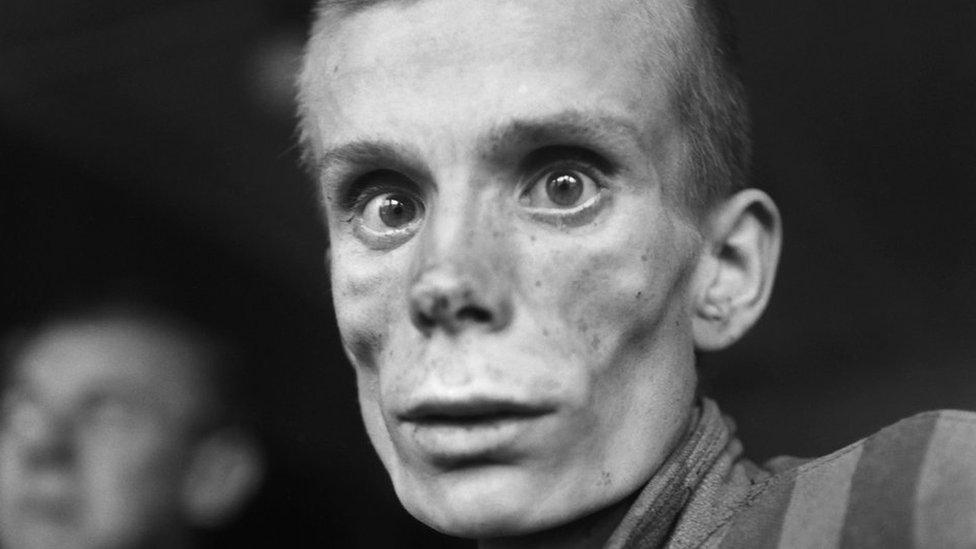
The original black-and-white image
A recent project which saw him publish photographs online to mark the liberation of concentration camps had more than a million shares on platforms including Instagram and Bored Panda and saw him receive messages from survivors' relatives who were moved by what they saw.
"The research into these photos was not an enjoyable experience, for obvious reasons, but the positive reaction was incredible," he said.
One photograph was an image of an 18-year-old Russian girl liberated from Dachau concentration camp.
"She looks more like an 80-year-old man, just skin and bone, but [with] young, bright blue eyes," said Mr Marshall.
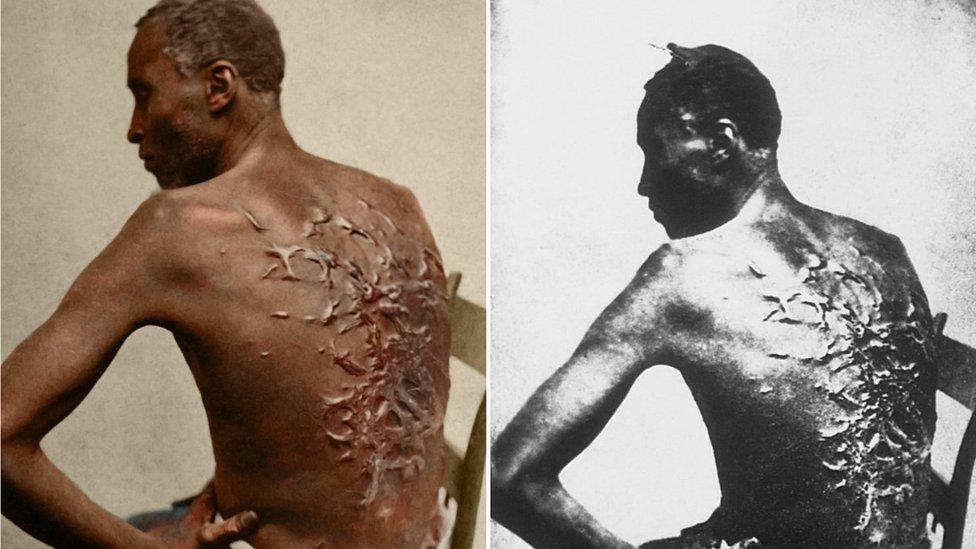
This picture, believed to date from the 1860s, shows a slave known as Gordon who had been whipped by his master
His most recent project, to mark Black History Month, looked at images of American slavery in the mid-19th Century.
It included one image of an escaped slave who had been whipped by his master.
"It's a shocking image to look at anyway," said Mr Marshall.
"But, as I added the colour, I could see the bruising and scars emerge and the colour emphasised to me the brutality of the original image."
Mr Marshall's interest has also been piqued by restoring pictures from World War One.
One such image, conveying the dark humour of New Zealand soldiers on the front line in France, features a sign above the trench saying: "The Digger's Rest. Board and residence. Cold showers in wet seasons. Herr Fritz's orchestra will play at frequent intervals."
"I love the composition of the photo," he said. "The amount of detail in the surrounding grass and foliage meant it was a feat to complete, but what I love is the humour in their faces and the home-made sign making light of the horrors of war."
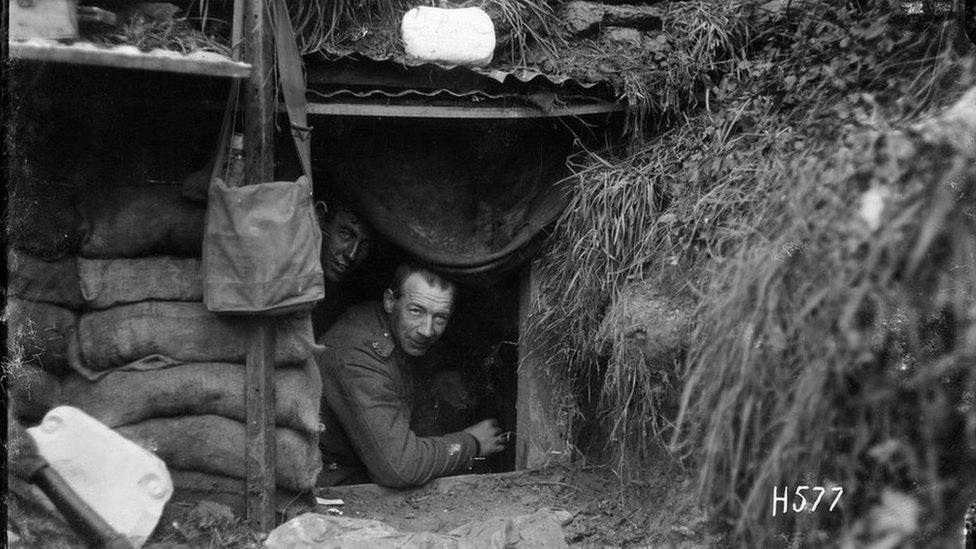
Two New Zealand soldiers on the front line in France

Mr Marshall's colourised version of the same black-and-white photograph
However, Mr Marshall is also commissioned to take on projects by families who want to see the faces of deceased relatives more vividly.
In one case, he restored a postcard which was sent by a serving soldier named William Field to his brother Harry in December 1909 from Aldershot Barracks.
"The original postcard is still owned by Harry's daughter Margaret, who is 90," said Mr Marshall.
"I was commissioned to colourise the photograph by descendants of the family."
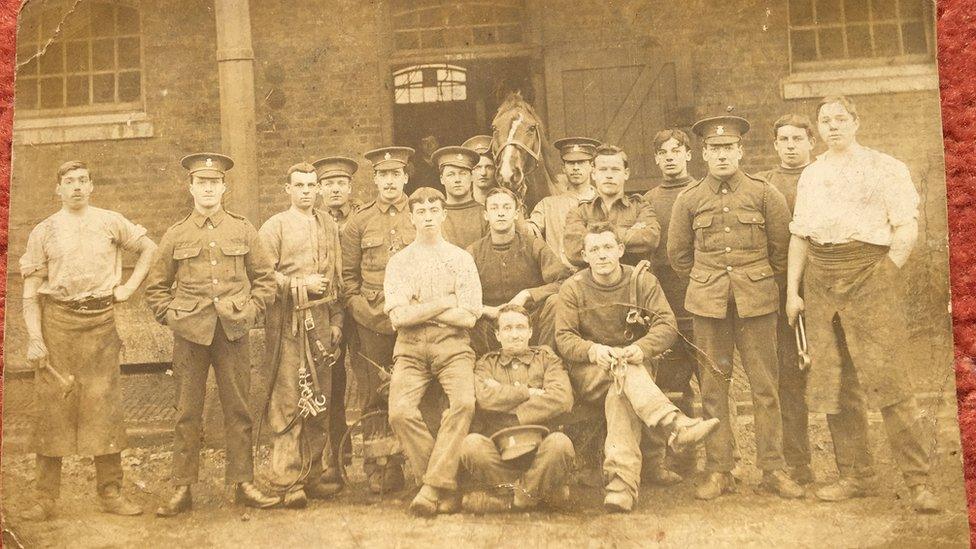
Mr Marshall is commissioned to take on projects by families
The family believe William died in action in 1917 and was laid to rest at Monchy British Cemetery in France.
Andy Gerencser, who commissioned the colour photograph, said Mr Marshall had "brought the picture back to life".
"For the first time we saw all the detail, the equipment and the badges on the helmets," he said.
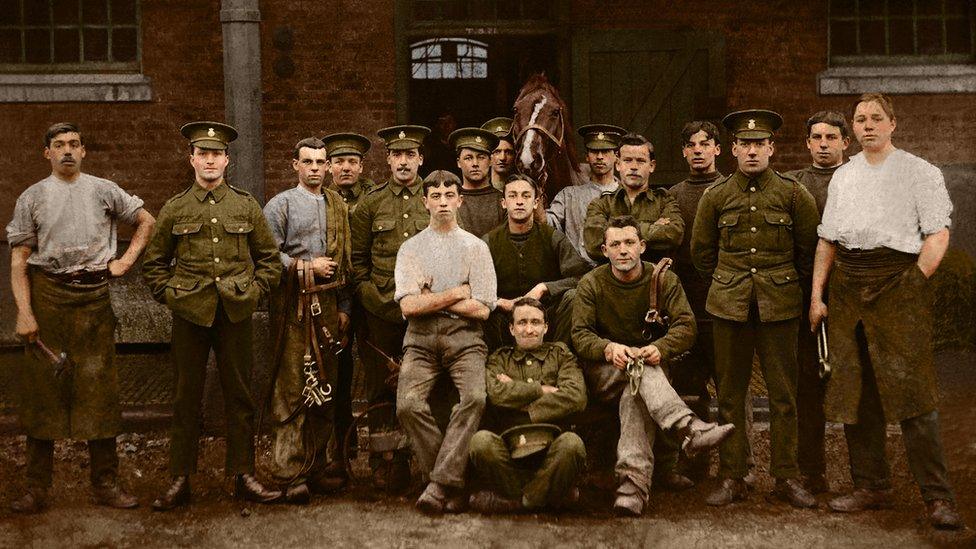
William Field is standing third from the left
Mr Marshall said he uses computer programmes to build up colour gradually, "like creating a painting".
"Much of the work [involves researching] the background of the photo, the context and time it was taken, in order to work out the most accurate or most likely colours," he said.
He said he is most proud when he sees his photographs included in books, "as I know they will last long after I'm gone".

A German Zeppelin airship known as the "Raider of Loughborough"
Author Ian Castle used an image Mr Marshall coloured of a crashed World War One airship on the cover of his book The First Blitz in 100 Objects.
He said: "It was the first time I'd seen a colorised picture of [it] and to see it in true colour was absolutely stunning. It brought it to life."
"It's an incredible photo of a German Zeppelin airship known as the 'Raider of Loughborough' after her part in a raid. Blown off course on the way home, she crashed into the sea near Norway," Mr Marshall said.
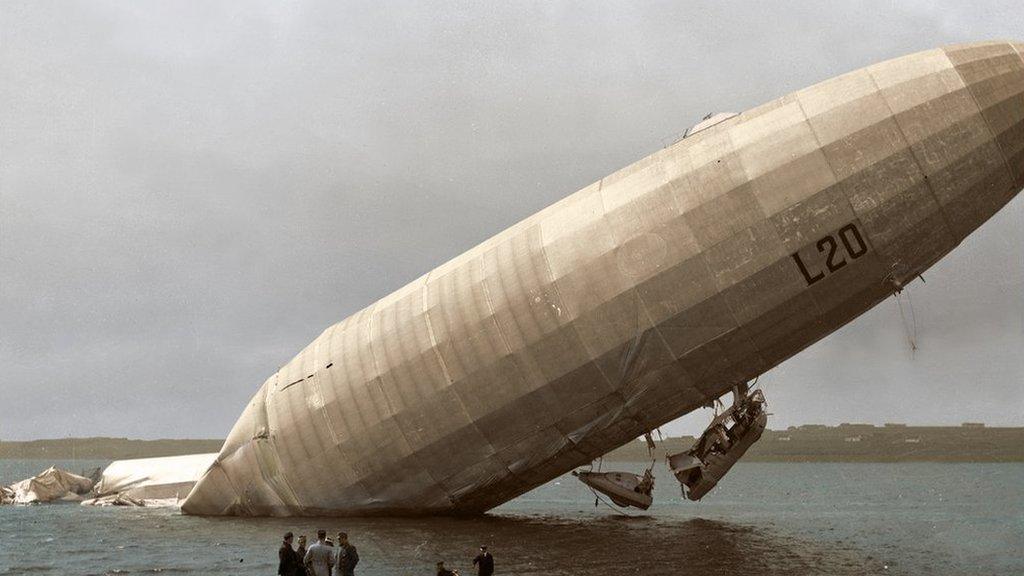
The Zeppelin crashed in the sea near Norway
Mr Marshall now has a portfolio of hundreds of colourised photographs.
"My favourite part has to be the reaction I get from people seeing the finished result, especially if it's a personal family photo that somebody may have had in black and white for decades," he said.
"Some people have said they had cried upon opening their emails to see the faces of people from the past come to life."

Follow BBC East Midlands on Facebook, external, Twitter, external, or Instagram, external. Send your story ideas to eastmidsnews@bbc.co.uk, external.
- Published6 June 2016
